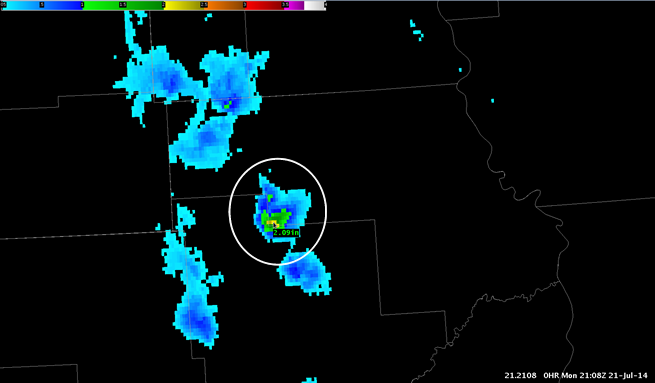Maximum Estimated Size of Hail (MESH) - Warning Decision Training Division (WDTD)
Navigation Links
Products Guide
Maximum Estimated Size of Hail (MESH)
Short Description
Estimate of the maximum hail size that can be expected.
Subproducts
None
Primary Users
NWS: WFO, CWSU, AWC, SPC
Input Sources
Resolution
Spatial Resolution: 0.01o Latitude (~1.11 km) x 0.01o Longitude (~1.01 km at 25oN and 0.73 km at 49oN)
Temporal Resolution: 2 minutes
Product Creation
MESH is calculated by:

where SHI is the “Severe Hail Index."
Technical Details
Latest Update: MRMS Version 10
References
Witt, A., M. D. Eilts, G. J. Stumpf, J. T. Johnson, E. D. Mitchell, and K. W. Thomas, 1998: An enhanced hail detection algorithm for the WSR-88D. Wea. Forecasting, 13, 286-303.




